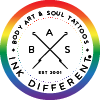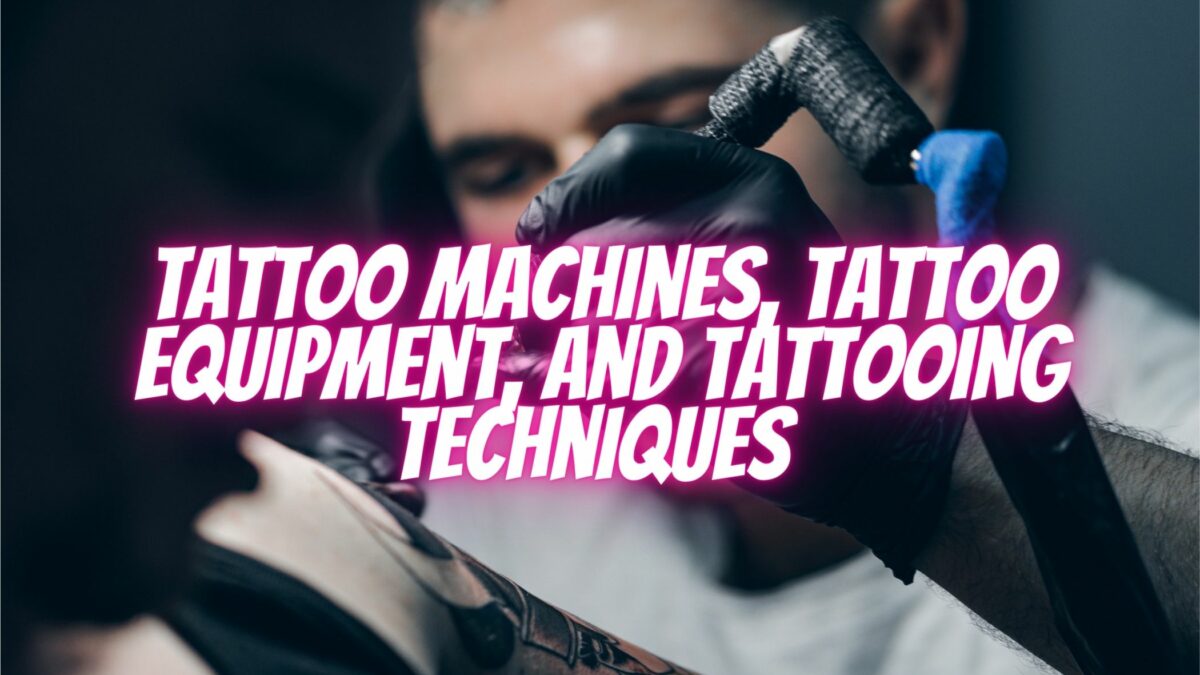- Ink Different Tattoo School
- 1-917-227-2842
- info@tattooschool.com
Tattoo Machines, Tattoo Equipment, and Tattooing Techniques
How necessary is the equipment for the Tattoo Artist? Does the quality of a tattoo machine matter?
For a Tattoo Artist, having top-quality equipment is essential. It allows Tattoo Artists to do the best job possible. Tattoo Artists must work in comfortable conditions because they have a huge responsibility. The client’s body and appearance depend on the Tattoo Artist’s professional ability. That is why it is so important to invest in high-quality equipment.
Whether you call it a tattoo machine Tattoo Artists must have a perfectly running and maintained machine to deliver impeccable tattoos repeatedly. But other pieces of a tattoo studio’s equipment matter.
The Tattoo Artist and client are in their respective chairs for an extended period. Tattooing sessions often last a few hours. Having a comfortable and adjustable chair that will keep each party supported is of utmost importance.
Good quality tattoo equipment is a significant investment for beginning Tattoo Artists and tattoo studio owners. It is important to remember that the right gear is reliable and will work well over a long period. Tattoo studios and Tattoo Artists are obligated to provide safety and blood-borne disease prevention, so personal protection equipment is essential in the tattoo industry.
As you see, there are so many kinds of equipment necessary to do tattoos, but let’s focus on tattoo machines and how you can use them. The guideline below answers those questions.
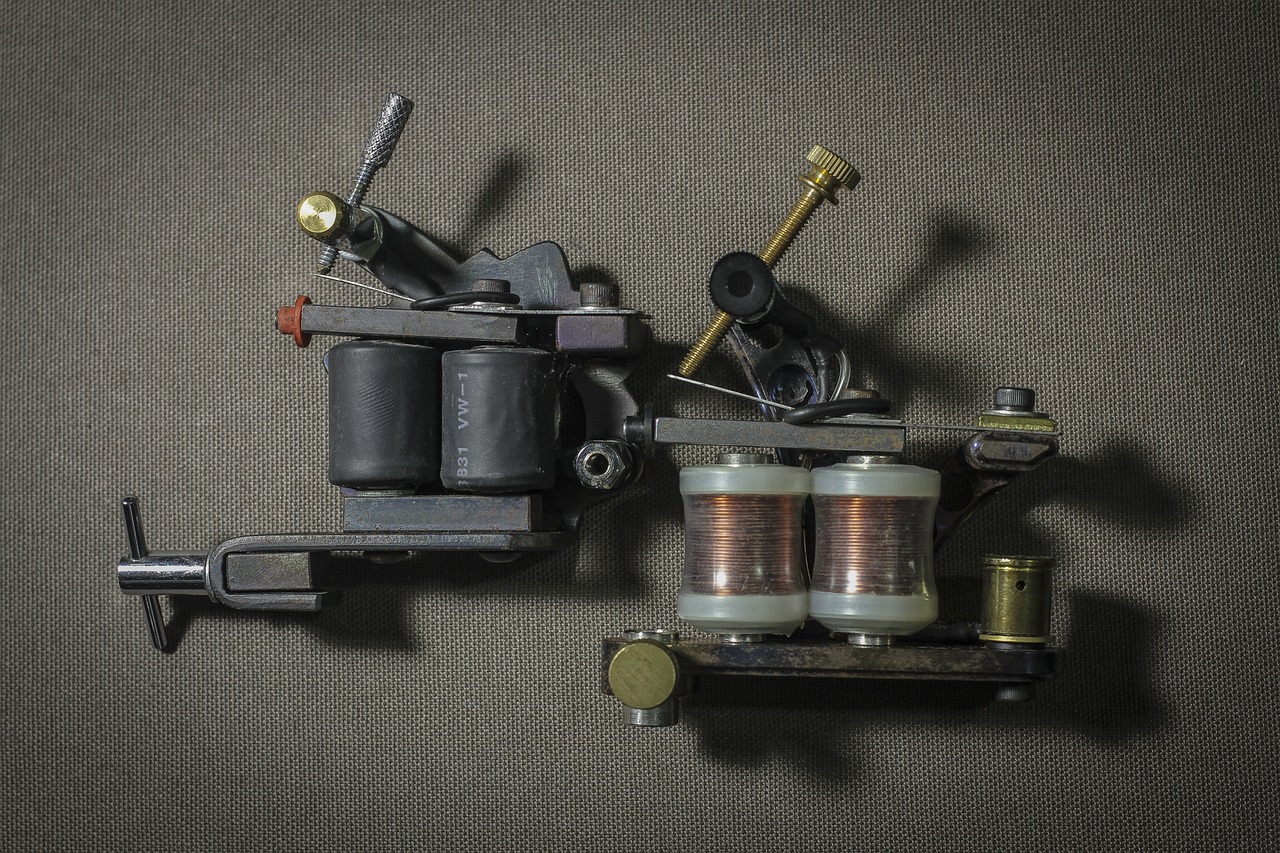
Want to change careers and become a Tattoo Artist or learn how to become a Tattoo Artist? Learn more about the profession on our website or find a tattoo apprenticeship near me and start today!
Tattoo Equipment And Supplies
Future Tattoo Artists should know all about tattoo equipment, including tattoo machine types and their manufacturing process. Tattoo machines are the same and are small hand-held devices used to engrave tattoos on the skin. Tattoo machines have two main types: coil tattooing machines and rotary tattooing machines. What is the difference between the coil and rotary tattoo machine?
Coil tattoo machines are older than rotary tattooing machines. Those tattoo machines were most commonly found in different tattoo supply shops years ago and were the original mass-market tattoo machines.
Today, Tattoo Artists use them less often than rotaries, yet it is essential to know how to use them and why people use them.
Here are some of the reasons why Tattoo Artists use coil tattoo machines:
- The speed and power of coil tattooing machines are easy to regulate.
- Also, coil tattoo machines are easy to customize.
- These machines can shorten the completion time.
- Coil tattoo machines provide heavier weight that allows more control for some Tattoo Artists.
- Even though they are noisy, most people like them.
- There are two types of coil tattoo machines commonly used: liners and shaders. Tattoo Artists use them interchangeably depending on the tattoo project or project phase.
Rotary tattoo machines use an electric motor to drive the needles into the skin. Those types of tattoo machines are much quieter and more lightweight.
Here Are Some Of The Reasons Why Tattoo Artists Use Rotary Tattoo Machines:
- A rotary tattoo machine is easy to handle, which lessens hand and finger cramps.
- Also, rotary tattooing machines can be used for lining, coloring, and shading work purposes.
- These tattoo machines require relatively low maintenance.
- The fact that they are relatively easy to use makes rotary tattoo machines everyone’s favorite!
- There are many kinds of rotary tattoo machines, so Tattoo Artists enjoy collecting the different models and using them on different tattoos.
What makes a great tattoo, aside from the design, composition, and placement? No matter how great the design looks and how, if it’s done by someone who doesn’t have a proper tattoo machine then the tattoo just won’t look good.
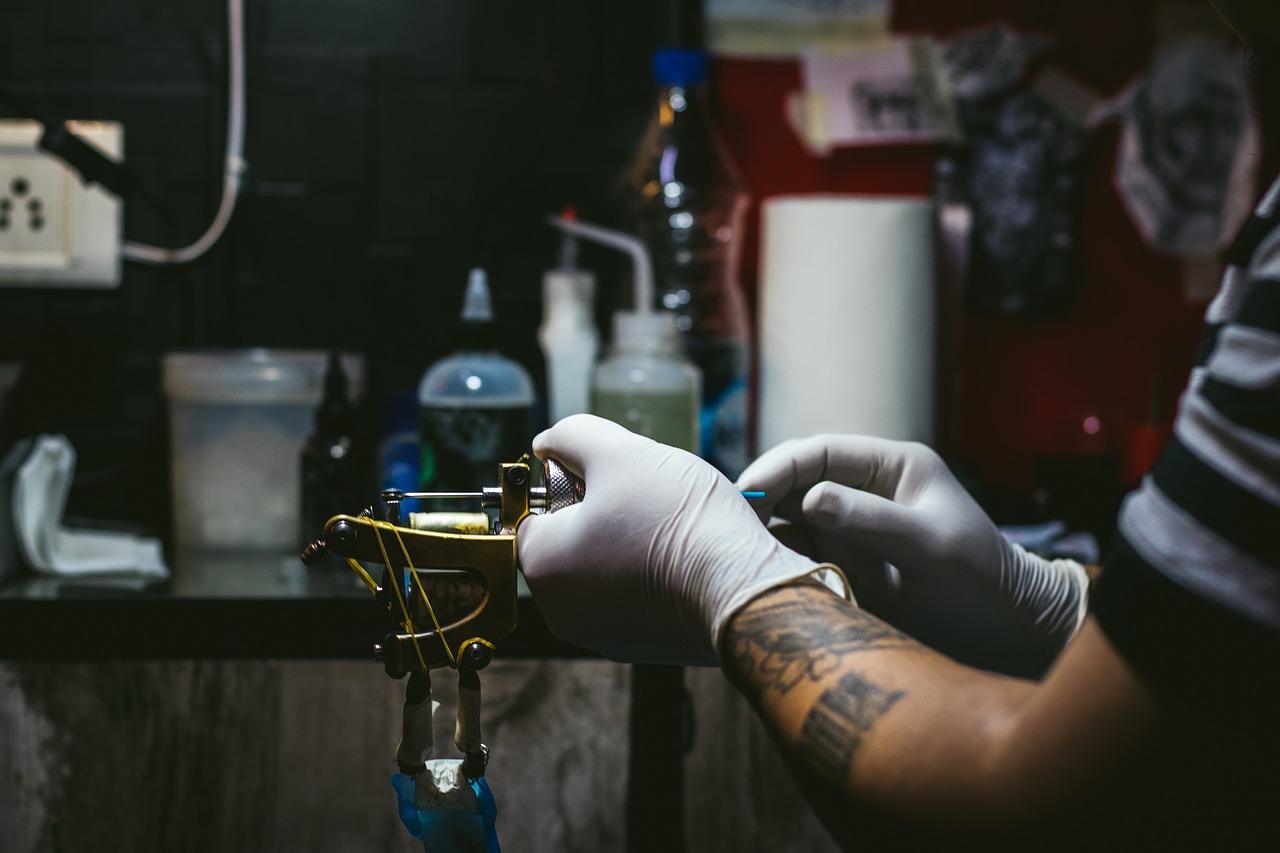
How To Find A Perfect Tattoo Machine For You?
Future Tattoo Artists learn about tattoo equipment and tattoo supplies in a tattoo apprenticeship or a tattoo school. Established Tattoo Artists teach about the advantages and disadvantages of every type of tattoo machine. Remember, rotary tattoo machines are lightweight and quiet, yet coil tattoo machines give you more tuning options.

Tips You Want To Know Before Buying Your First Tattoo Machine
Guidelines that may help you choose the suitable tattoo machine for you:
- The tattoo machine’s quality is much more important than the design.
- Choose a tattoo machine made of copper, iron, or brass.
- In the long run, it is better to buy more expensive tattoo equipment of better quality.
- Don’t make decisions based on trends or others’ opinions.
- You can ask experienced Tattoo Artists for advice.
- Read tattoo equipment reviews.
- Choose between coil and rotary tattoo machines.
- Choose the best one for your tattoo purposes.
- Learn about the most common brands of tattoo equipment.
- Choose a proper tattoo machine for your skills and experience.
- Comfortability and durability are extremely important during long sessions and busy days in tattoo studios.
- Find the size and shape of your tattoo machine that fits your hand.
Aside from buying a tattoo machine, you need to learn about tattoo machine voltage and power supplies. It’s best to learn everything from an experienced artist and avoid bad choices. Avoiding common beginners’ mistakes will help you to save money.
The most common mistakes are purchasing the wrong tattoo accessories and not understanding the tattoo machine voltage. It is common for beginning Tattoo Artists to buy expensive accessories that don’t fit their tattooing machines. For instance, inexperienced Tattoo Artists often choose the wrong size of needles or the wrong voltage of power supply for their machine, and the tattoo, they are about to perform. Those mistakes can cause your tattoo machine to underperform. That means your tattoo results will NOT make your client happy.
Are you the parent of a future tattoo artist, and you’d like to learn more? Continue reading about parents who want to help their children become Tattoo Artists.
Lining, Shading, And Tattoo Techniques.
Once you know which tattoo machine is the best for you, learn how to use it for the best outcome. Established Tattoo Artists know various tattoo techniques and have tricks that are useful during tattooing. Honing in on your craft and perfecting your style is key for Tattoo Artists. Learning different styles and tattoo techniques helps Tattoo Artists figure out what clients want to get and how to do it right. Future Tattoo Artists will learn about tattooing techniques in a tattoo school and tattoo apprenticeships. There are various techniques, and every Tattoo Artist has to find his niche.
Shading Techniques
Tattoo shading gives tattoos a more realistic look and makes them look more 3D.
There are a few types of shading, including:
- Whip shading
- Trail shading
- Drag shading
- Opaque gray shading
Going at the right speed, using the correct needle, the proper voltage, and considering the effect you’re going for is crucial for executing the shading part flawlessly. Shading can make a tattoo or break it. Beginning Tattoo Artists need a lot of practice on fake skin first.
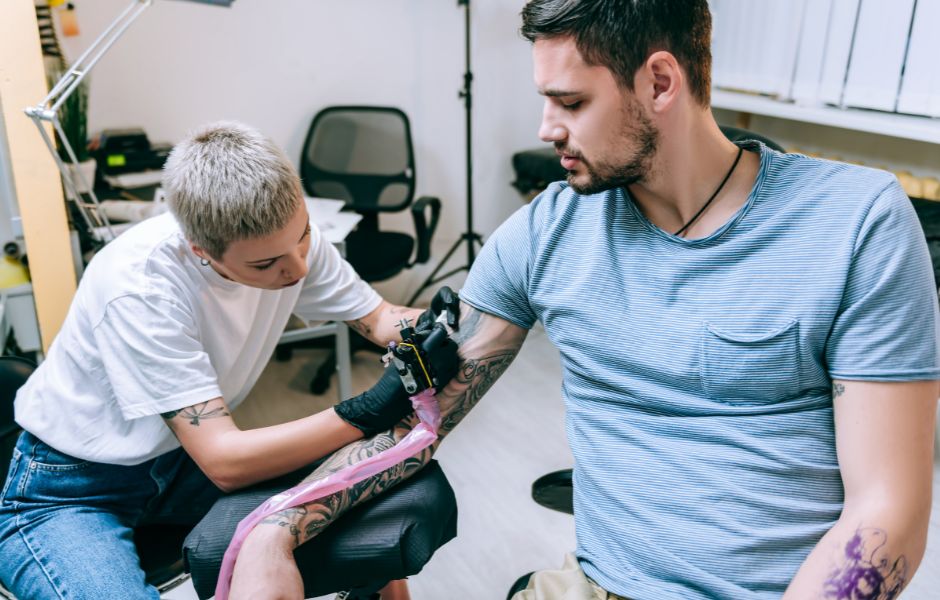
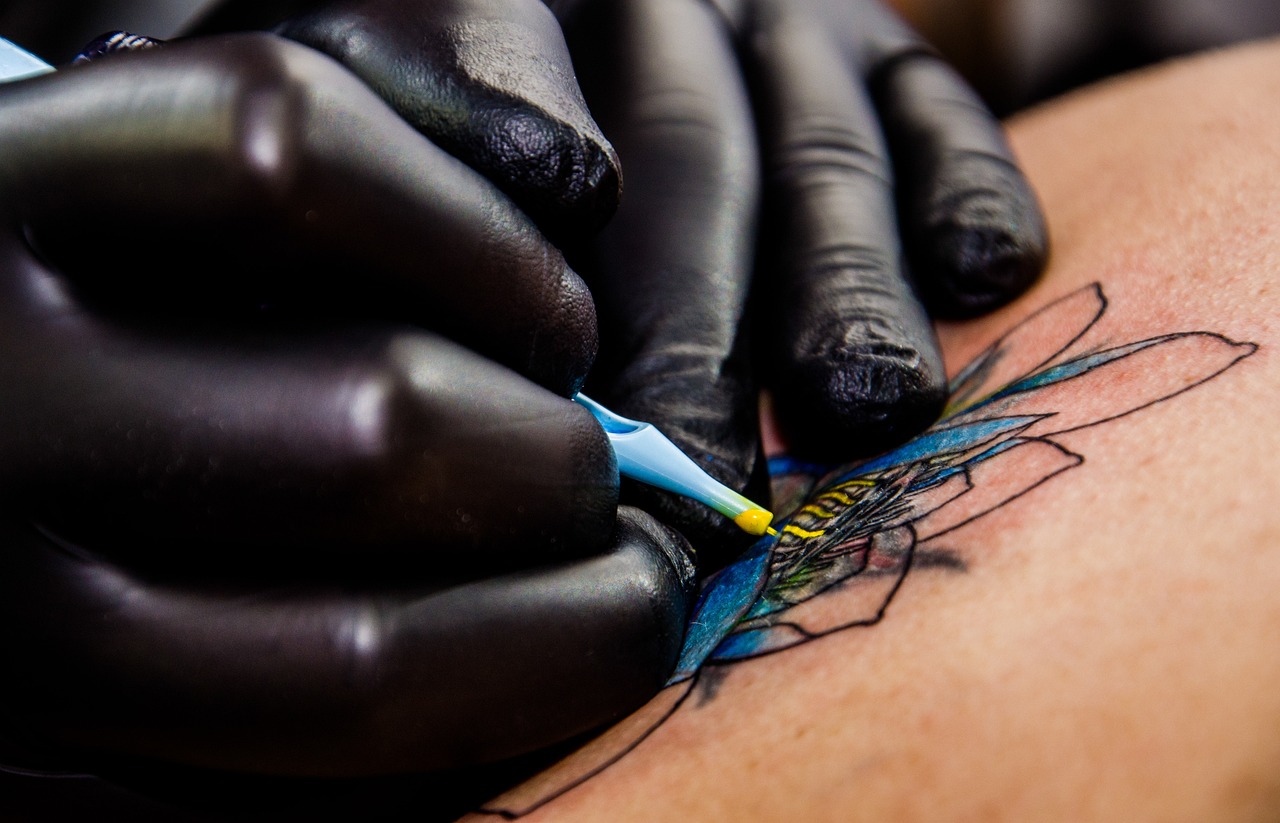
Layering Colors On Client’s Skin
Layering is mixing colors in the skin to achieve a gradation effect or spectrum effect. The same high level of quality of tattoo ink is crucial for this technique.
Mixing Tattoo Ink Colors Before Tattooing
This is blending different colors to make a new tattoo ink color. Tattoo ink can be mixed by combining two colors to make a different blend of color or shade. Experienced Tattoo Artists know how to make tattoo ink color lighter or darker and how to get the right effect.
Color Packing
Being able to pack color correctly brings a color tattoo to life. Without the proper tattoo techniques for packing and blending out inks, tattoos may look patchy, pale, or even blurred. Tattoo color packing techniques include moving a tattoo machine in very tight ovals and pushing and pulling needles to get the proper shade of color. Correct tattoo color packing is crucial to getting long-lasting, vibrant tattoos.
Lining
The line work is the most crucial technique for beginning Tattoo Artists. Skilled Tattoo Artists can do almost perfect lines because of years of practice. Beginners make a lot of mistakes during lining.
The most common mistakes include:
- Rubbing the stencil off in the middle of the tattooing. It is essential in the beginning to start tattooing from the bottom corner.
- Holding a tattoo machine the wrong way. It is vital to use all fingers to hold a tattoo machine in one hand while stretching the skin in the other.
- Moving a tattoo machine too slow or too fast or putting a needle too deep. It can leave scars and blowouts on the client’s skin.
- Shaking hands during tattooing.
- Stretching the client’s skin the wrong way.
To avoid all those mistakes, enroll in a tattoo school where you will learn about common possible mistakes and how to fix them.
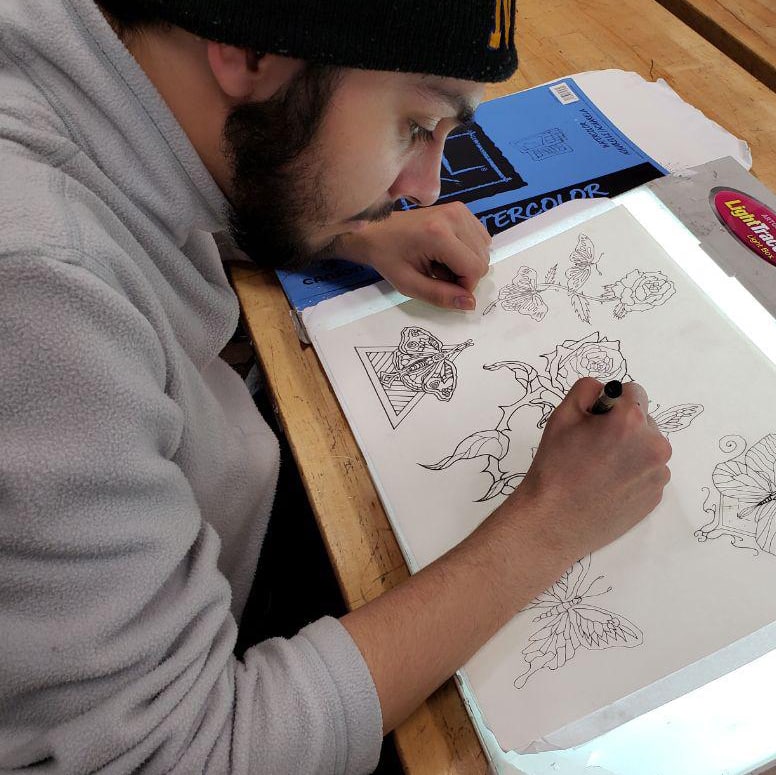
Dot Work
Dotwork is a tattooing technique where the Tattoo Artist inks a few dots for a striking visual impact. They can create a full image and shape or only shading using a dot art technique. Tattoo shading done by using only dots is called stippling.
Hand-Poke Tattoos Or Stick ‘n Poke Tattoos
Hand-poked tattoos are tattoos made without the use of tattoo machines. Hand-poke is the oldest tattoo technique. While they are created with similar supplies, stick ‘n poke Tattoo Artists push needles and ink into the skin manually, without the aid of a power supply.
No matter if you use a tattoo machine for beginners or own a professional tattoo kit, or even if you don’t own any tattooing equipment yet.
Contact us to start training in our tattoo apprenticeship program and learn more about tattooing, equipment, sanitization, and tattoo techniques, and if you are accepted and finish your training with us… a guaranteed job offer!
Are you ready to turn your career around? At Ink Different Tattoo School, we offer you a fresh start! You get a unique opportunity to learn from an experienced Tattoo Artist.
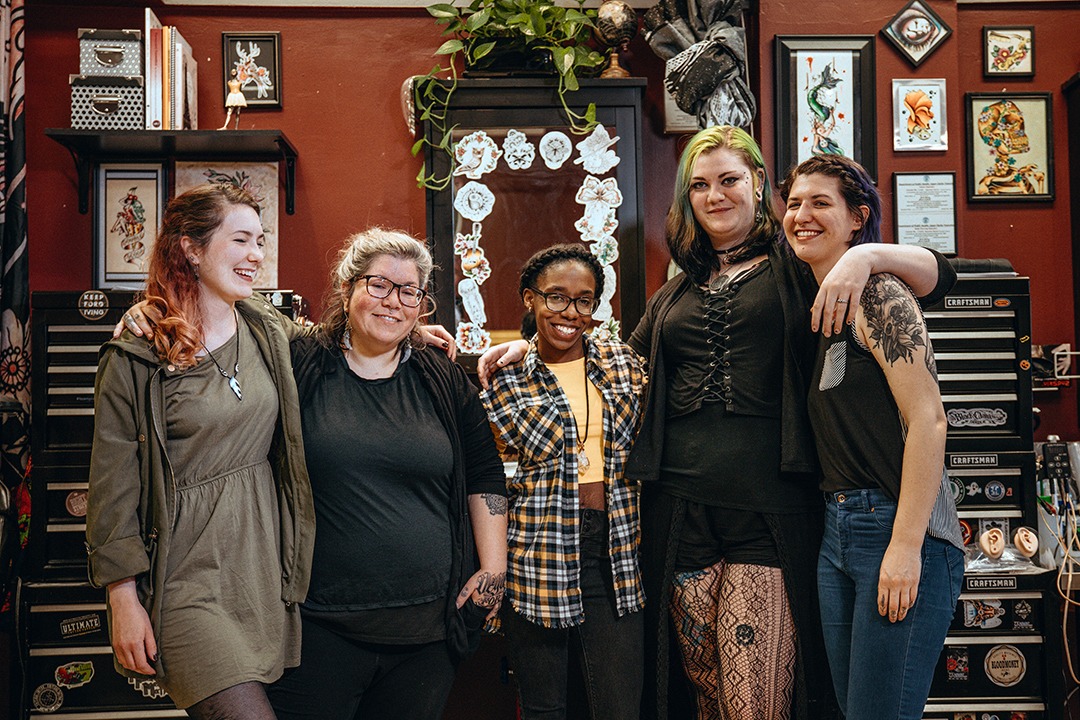
Tattoo Apprenticeship at Ink Different
Ink Different Tattoo School prides itself on offering a comprehensive tattoo apprenticeship program that sets aspiring Tattoo Artists on the path to success. Our program is designed to provide hands-on training, guidance, and support to help our apprentices develop their skills and artistic vision. With experienced Tattoo Artists as mentors, apprentices at Ink Different learn the art of tattooing in a creative and inspiring environment.
Enrolling in a tattoo apprenticeship with Ink Different Tattoos can be highly beneficial for aspiring tattoo artists looking to break into this vibrant industry. Ink Different Tattoos is renowned for its commitment to excellence and its dedication to nurturing emerging talent. Under the guidance of experienced artists, apprentices at Ink Different Tattoos can learn not just the technical skills of tattooing but also gain insights into client interactions, design principles, and studio management. This comprehensive training prepares apprentices not only to create beautiful tattoos but also to thrive in the competitive world of tattooing.
Guaranteed Job Offer
One unique aspect of our apprenticeship program is our guaranteed job offer upon successful completion. We are committed to helping our apprentices transition from apprentices to professional Tattoo Artists, and our job offer ensures that they have a place to begin their careers. This commitment sets us apart from other tattoo schools. It reflects our dedication to supporting the next generation of Tattoo Artists.
Diversity and Inclusion
At Ink Different Tattoo School, we understand the importance of diversity and inclusivity in the tattoo industry. That's why we are proud to offer our program in multiple locations across the United States, including Brooklyn, Chicago, Tampa, and Miami-Fort Lauderdale. Our commitment to diversity is also reflected in our staff, many of whom are bilingual and speak Spanish, ensuring that our apprentices feel welcome and supported regardless of their background.

